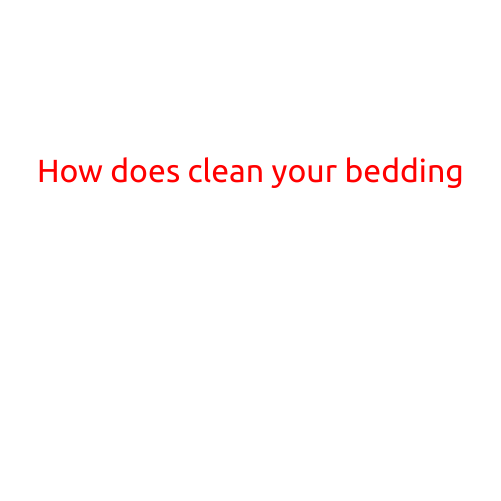
How to Clean Your Bedding: A Step-by-Step Guide
Do you know how often you should wash your bedding? It’s recommended to wash your bedding once a week to keep it clean and hygienic. Cleaning your bedding regularly can help remove dirt, dust mites, and allergens that can aggravate skin conditions and respiratory issues. In this article, we’ll provide a step-by-step guide on how to clean your bedding effectively.
Why It’s Important to Clean Your Bedding
Dust mites, tiny creatures that live in bedding, can trigger allergies and asthma. They thrive in warm, humid environments and feed on human skin cells and sweat. Washing your bedding in hot water can kill these pesky critters and remove their waste products that can exacerbate respiratory issues.
Materials Needed
Before you start cleaning your bedding, make sure you have the following materials:
- A washing machine
- A mild detergent
- Hot water
- A dryer or a drying rack
- Fabric softener (optional)
Step-by-Step Guide
- Check the Care Label: Before washing your bedding, always check the care label for any special washing instructions. Some bedding may require dry cleaning, while others may be machine washable.
- Sort Your Bedding: Sort your bedding into different piles based on the type of fabric and color. Delicate items like lingerie or silk should be washed separately from cotton or synthetic fabrics.
- Pre-Treat Stains: If your bedding has any stains, pre-treat them with a stain remover or a laundry detergent specifically designed for removing tough stains.
- Wash in Hot Water: Wash your bedding in hot water (at least 130°F) to kill dust mites and remove dirt and allergens. Use a mild detergent that’s gentle on fabrics.
- Add Fabric Softener (Optional): If you want to add a touch of softness to your bedding, you can add fabric softener to the wash cycle.
- Dry Your Bedding: Remove your bedding from the washer and dry it in a dryer or on a drying rack. If you’re using a dryer, use a low heat setting to prevent shrinkage.
- Check and Fluff: Once your bedding is dry, remove it from the dryer or drying rack and fluff it up to remove any wrinkles or creases.
Tips and Tricks
- Wash your bedding immediately after an illness or allergy flare-up to remove any allergens or bacteria.
- Use a HEPA filter vacuum cleaner to remove dust mites and their eggs from your bedding.
- Don’t share bedding with others to prevent the spread of germs and allergens.
- Consider using bedding covers or encasements to keep dust mites and allergens out of your bedding.
- Don’t wash your bedding in cold water, as this can allow dust mites to survive and thrive.
Conclusion
Cleaning your bedding regularly is crucial for maintaining a clean and hygienic sleeping environment. By following these simple steps, you can keep your bedding free from dust mites, allergens, and bacteria. Remember to check the care label, sort your bedding, and pre-treat stains before washing. Happy cleaning!





